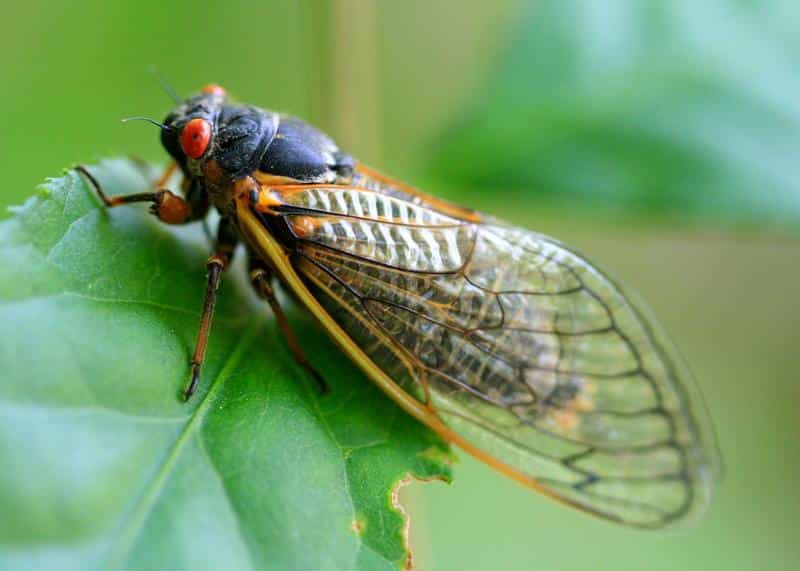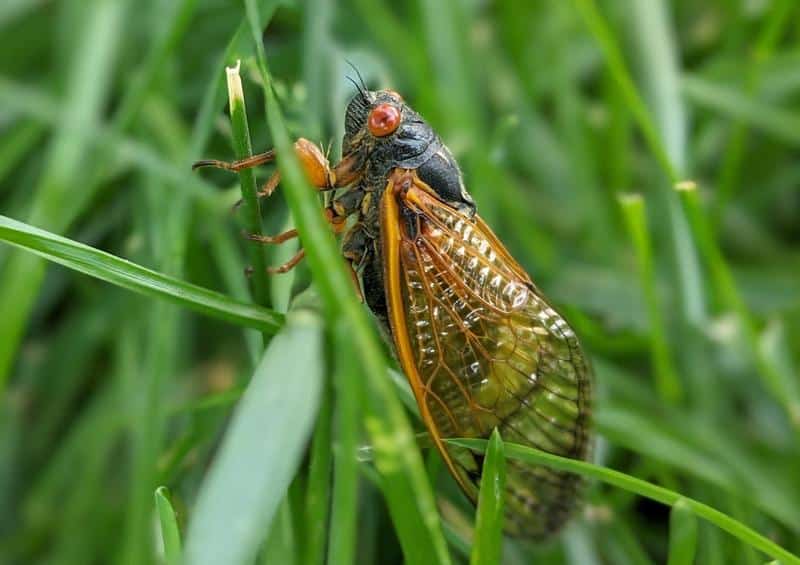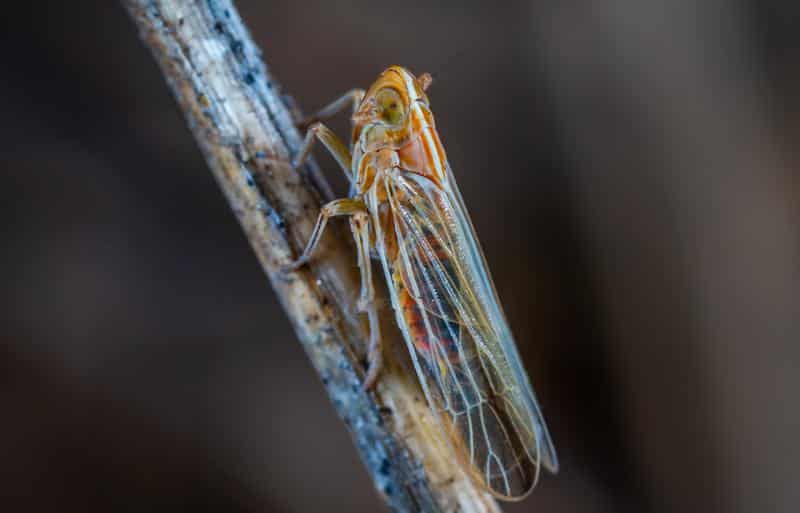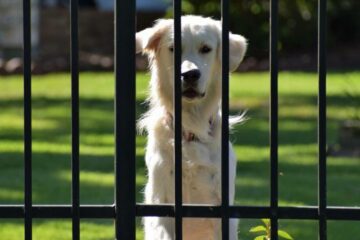Are Cicadas Poisonous to Dogs? Can Dogs Eat Cicadas? [Answered]
Are cicadas poisonous to dogs? Can dogs eat cicadas? In this article, we’ll answer everything you need to know about both of those questions (including what to do if your dog ate a cicada). We’ll then teach you the easy-to-train commands you need to stop your dog eating cicadas once and for all.
Next, we’ll cover other parts of this subject you’re going to want to know. We’ll go over why do dogs eat cicadas, do cicadas bite dogs, and finally, can dogs hear cicadas underground? Keep reading to learn all this and more!
Are Cicadas Poisonous to Dogs?

Cicadas are not poisonous to dogs. However, consuming large amounts of cicadas can potentially cause digestive upset or blockages due to their hard exoskeleton. Dogs with a history of dietary intolerance or gastrointestinal issues are at higher risk.
Are Cicadas Harmful to Dogs?
While cicadas aren’t poisonous to dogs, they can pose risks if eaten in large quantities. Their exoskeleton is tough and hard to digest, which may lead to gastrointestinal obstruction, particularly in smaller dogs.
Common symptoms of this include vomiting, loss of appetite, lethargy, and abdominal pain. If your dog exhibits any of these symptoms after eating cicadas, seek veterinary attention immediately.
Training the “Stay” Command
To prevent your dog from eating cicadas, training them to follow a “stay” or “wait” command can be helpful. Start in a quiet environment, with your dog in a sitting position. Hold out your palm towards them and say “stay”.
Wait for a few seconds, and if they remain in position, reward them with a treat and praise. Gradually increase the time they need to stay, and introduce distractions as they improve.
Teaching the “Leave It” Command
The “leave it” command is another useful tool. To teach this, hold a treat in a closed fist and present it to your dog. When they try to get it, say “leave it”. Once they stop trying and pull away, reward them with a different treat from your other hand. Repeat until they start moving away from your fist when you say the command.
While cicadas are not poisonous to dogs, they can still pose health risks if eaten in large quantities. Training your dog to follow commands such as “stay” and “leave it” can help manage their curiosity towards cicadas, and keep them safe during cicada seasons.
But while these steps will get your dog to stop eating cicadas, it’s important to remember that the underlying behavioral issues (prey drive, curiosity, overexcitement, etc.) that were causing all of this to begin with will still be present. And until you address those, any positive changes you see are only going to be temporary.
“Well, how do I make these changes last?”
By getting your dog to truly choose to follow your direction, that’s how. I tried many times to write out how you can do that before deciding it made more sense to just link you to the free video series that explains it better than I’d ever be able to.
The series is by a man named Dan who is one of the world’s leading dog obedience trainers. In it, he teaches you how to put an end to things like your dog eating cicadas and all other misbehavior using his fast and easy-to-follow methods.
In the first video, Dan will reveal to you why the two most common methods of dog training only doom you to failure. You can watch the video now by clicking here. Follow the proven system he’ll show you in his series and you’ll never have to spend another second worrying about your dog eating cicadas ever again!
Can Dogs Eat Cicadas?

Dogs can eat cicadas safely in small quantities. Still, while cicadas aren’t inherently toxic to dogs, they are not recommended as a part of their diet. Consuming too many cicadas can cause gastrointestinal discomfort or even lead to a blockage due to their hard exoskeleton.
Supervising your dog during cicada season and teaching them basic commands can help prevent them from indulging in these insects.
Dog Eating Cicadas
Dogs eating cicadas are usually attracted due to their movements and the noise they make. While an occasional cicada may not harm your dog, consuming them in large quantities can be risky. The exoskeleton of cicadas is tough and difficult to digest, which can lead to stomach discomfort, vomiting, or in severe cases, an intestinal blockage.
Learn how to stop your dog eating cicadas using some easy-to-train commands by going back to the first section of this article.
My Dog Ate a Cicada
If your dog ate a cicada, monitor them closely for any signs of discomfort. Signs of gastrointestinal distress include loss of appetite, lethargy, vomiting, or changes in bowel movements. If your dog shows any of these symptoms, it’s important to contact your vet immediately. In the meantime, discourage your dog from eating more cicadas and provide them with plenty of fresh water.
Keeping Cicadas Away From Your Property
Preventing an infestation of cicadas can be challenging due to their lifecycle and numbers. However, there are a few measures you can take. You can try using insect-repellent plants or consider professional pest control services.
Keeping your yard clean and free from debris can also discourage cicadas from laying eggs. Additionally, regular lawn maintenance can disturb cicada nymphs and discourage them from emerging.
Teaching your dog the “leave it” command can be a useful tool in managing their fascination with cicadas. We explain how to do it in the first section. You should also supervise your dog’s outdoor activities during cicada season to prevent them from overindulging in these insects.
To conclude, while cicadas aren’t poisonous, they should not form a part of your dog’s diet due to potential health risks.
Why Do Dogs Eat Cicadas?

Dogs eat cicadas mainly due to their hunting instincts and natural curiosity. Cicadas’ movement and noise can trigger a dog’s prey drive, leading them to chase and consume these insects. However, you should always watch your dog during cicada season to prevent potential health issues.
Why Does My Dog Eat Cicadas?
Dogs eat cicadas because their buzzing sounds, fluttering movements, and abundance during certain times of the year are very attractive to dogs who have a high prey drive. Dogs also explore the world through their mouths, so when they find an insect like a cicada, their first instinct might be to taste it.
But it’s not just about the chase and catch. Dogs are opportunistic eaters and may see cicadas as a potential food source, especially when these insects are plentiful. Even though cicadas aren’t nutritionally beneficial for dogs, they are generally not able to distinguish between healthy and unhealthy food items. Learn to prevent this in the first section.
Managing Your Dog’s Cicada Consumption
It’s important to manage your dog’s interest in cicadas to prevent them from consuming too many. You can do this by providing plenty of physical and mental stimulation, which can distract them from hunting cicadas. Training your dog to follow commands like “leave it” can also help manage their behavior during cicada season. We explain how to do it in the first section.
Preventing Health Issues
While the occasional cicada may not cause harm, consuming a large amount could lead to potential health problems such as gastrointestinal blockage or upset. If your dog eats a cicada, monitor them closely for any signs of discomfort or changes in behavior. If they show any signs of distress, such as vomiting, diarrhea, or loss of appetite, seek veterinary care immediately.
In conclusion, dogs eat cicadas due to their inherent instincts and curiosity. While these insects aren’t inherently toxic, they can cause health issues if eaten in large quantities. Therefore, it’s important to keep an eye on your dog during cicada season and take steps to manage their interest in these insects.
You should get this behavior taken care of now, as doing so will allow your dog to have safer potential meetings with other insects and animals. Questions like are stink bugs poisonous to dogs, are tarantulas poisonous to dogs, can dogs eat moths, can dogs eat flies, can dogs eat millipedes, what are the symptoms of centipede bites on dogs, or what to do when you find a scorpion sting on your dog will then be no issue for you.
Do Cicadas Bite Dogs?
Cicadas do not bite dogs. Their mouthparts are designed for sucking plant fluids and are incapable of biting or stinging animals or humans. However, cicadas can be ingested by dogs, potentially causing mild to moderate health issues.
Let’s delve deeper into the interaction between cicadas and dogs:
- Cicadas are not harmful: Cicadas are not venomous, and their only defense mechanism is their sheer numbers, which allow them to survive predation. They don’t have any means of physically harming a dog.
- Cicadas are not toxic but can cause digestive issues: While cicadas are not poisonous, if a dog eats too many, it can lead to stomach upset, vomiting, or constipation due to their hard exoskeleton. These symptoms usually resolve on their own, but if they persist, a vet consultation is necessary.
- Choking hazard: Large cicadas can pose a choking hazard, especially for small dogs. Keep an eye on your dog during cicada season to prevent them from swallowing cicadas whole.
- Allergic reactions: Rarely, dogs can have an allergic reaction to cicadas. If you notice symptoms such as swelling, hives, difficulty breathing, or other signs of an allergic reaction, seek immediate veterinary care.
- Cicadas can carry pesticides: If cicadas have been exposed to pesticides or other chemicals, they can pass these toxins on to dogs when ingested. Be aware of the use of such substances in your local area.
While cicadas do not bite dogs, their ingestion can lead to various health problems in dogs. You should closely monitor your dog during cicada seasons and consult a vet if any unusual symptoms appear. Learn the commands you should know to keep your dog safe during this time in the first section.
Can Dogs Hear Cicadas Underground?
It’s highly unlikely that dogs can hear cicadas when they’re underground. While dogs do have a superior sense of hearing compared to humans, the depth at which cicadas burrow, coupled with the density of soil, makes it difficult for sound to travel up to the surface.
- Dog’s hearing range: Dogs have a remarkable sense of hearing, capable of detecting frequencies between 67 Hz to 45,000 Hz. This range allows them to pick up on sounds humans can’t hear. However, sound travels differently underground, and hearing cicadas through layers of soil is unlikely.
- Cicadas underground: Cicadas spend most of their lives underground as nymphs, feeding on the sap from tree roots. While underground, they are relatively quiet and don’t make the loud, characteristic noises associated with their adult form.
- Soil and sound: Sound travels differently through various mediums. In dense materials like soil, sound waves are absorbed and dampened, making it difficult for them to reach the surface with enough intensity to be heard by a dog.
- Behavioral observation: If dogs could hear cicadas underground, we would likely see behavioral changes, like digging, during periods when cicadas are beneath the surface. Such behavior is not commonly observed.
Although dogs have an impressive sense of hearing, it’s unlikely that they can hear cicadas when they’re underground. The sound-dampening properties of soil and the quiet nature of cicadas in their nymph stage make this a remote possibility. Learn to control your dog around these insects by going back to the first section now.
I’m sure you’re ready to no longer worry about any potential cicada and dog encounters, so I’ll let you get started now. Good luck with everything, and thanks for reading our article “Are Cicadas Poisonous to Dogs? Can Dogs Eat Cicadas?”





